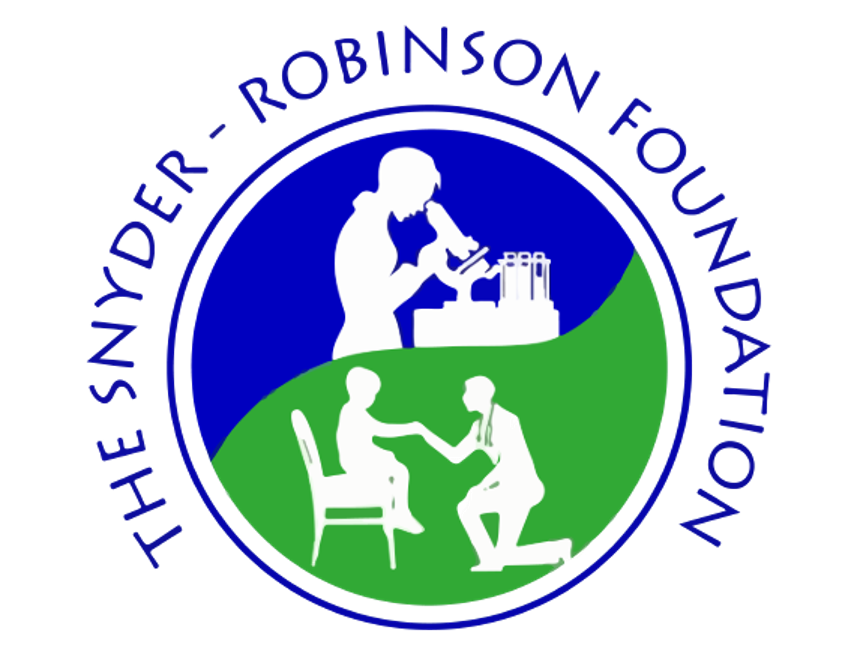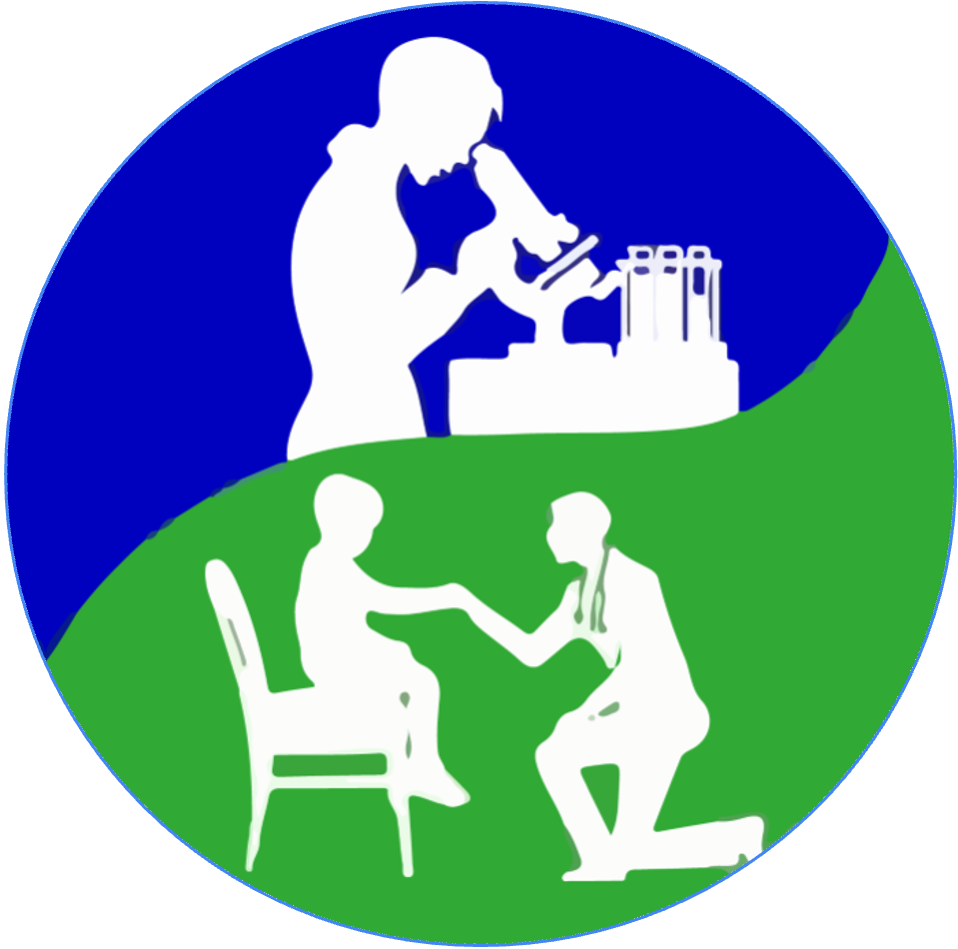Polyamine Metabolism & Transport in the Etiology and Treatment of Snyder-Robinson Syndrome
-
[TRANSCRIPT] Polyamine metabolism & transport in the etiology and treatment of Snyder-Robinson Syndrome – Video presentation by Tracy Murray Stewart for SRF Virtual Conference
Slide 1: Hi everyone. I am Tracy Murray Stewart. I work together with Dr. Bob Casero at Johns Hopkins University. Today I’m going to share with you some of what we have learned so far about Snyder-Robinson syndrome at the biochemical level and then talk about how we are using this knowledge to develop a treatment that would target the underlying molecular mechanisms that cause the SRS phenotype, as opposed to just treating the symptoms.
Slide 2: One of the first studies we did was to characterize in detail the differences in each step of the polyamine pathway between cells from SRS patients and WT donors. There are 3 main polyamines present in all mammalian cells. Polyamine biosynthesis starts with the formation of the diamine putrescine, to which an aminopropyl group is added to form spermidine, and another aminopropyl is added to the other side to form spermine. This conversion of spermidine to spermine is the step that is catalyzed by spermine synthase (SMS), the enzyme that is mutated in Snyder-Robinson syndrome. The result of not having fully functional SMS is a buildup of spermidine while the production of spermine is greatly reduced, resulting in an increased SPD: SPM ratio, that is one of the key biochemical changes that identifies SRS. We also tend to see reduced levels of putrescine and the rate-limiting biosynthetic enzyme ornithine decarboxylase.
Slide 3: This is some of the data demonstrating the changes mentioned in the previous slide. These are lymphoblastoid cell lines derived from peripheral blood of 3 SRS patients with different mutations in comparison with cells from donors with wildtype or unmutated SMS genes. In each of the panels, each data point represents an individual patient and the horizontal line indicates the mean of the group. Panel A shows the reduction in putrescine, B shows the increase in spermidine, C shows the reduction in SPM, and D shows that overall there are no changes in total polyamines (PUT+SPD+SPM).
Plotting the SPD: SPM ratio reveals the elevation in SRS patients vs. WT. This ratio varies from patient to patient in SRS, depending on the functional effects of their individual SMS mutation, with a trend suggesting that increased ratio might correlate with increased severity of the phenotype (in these patients).
Slide 4: Although functional spermine synthase is the only way cells can make spermine, other sources of spermine are available to cells in their extracellular environment. Through the polyamine transport system, cells can take up spermine from exogenous sources including the diet and intestinal microbiota. However, dietary supplementation has not appeared to be beneficial in either early mouse models of SRS or in patients. One of our first hypotheses was that polyamine transport might be deficient in SRS cells. So, we cultured our SRS cell lines in the presence of spermine for 24 h and then analyzed their polyamine distribution profiles. The pie chart at the top presents the distribution in wildtype untreated cells – that is essentially our goal for the SRS cells. The middle panel shows the skewed distribution of the SRS lines without treatment, and the bottom shows the effect of spermine exposure on the SRS cells. Not only does the spermine concentration increase to within the range of wildtype cells, but its accumulation also stimulates a reduction in spermidine levels.
The top right panel shows the SPD: SPM ratios before and after SPM treatment, revealing that treatment returned the ratio of SRS patients to that of WT. The middle right panel shows that treatment redistributes the polyamines rather than increasing the total intracellular polyamines. In the bottom panel, we used a spermine analog to verify uptake.
Slide 5: A caveat to the cell line studies thus far is that lymphoblasts do not necessarily represent a cell type that contributes to an overt phenotype in SRS. We repeated our SPM supplementation experiments in fibroblast cell lines derived from skin biopsies of SRS patients. Looking at the untreated cells on the left, it is evident that the SRS lines again have polyamine distribution that differs from the wildtype (the values above the columns indicate the SPD: SPM ratio; columns are stacked to indicate total polyamine concentration). Some of these cell lines also demonstrate differences in total polyamine concentration.
The right side shows polyamine distribution after adding 5 uM SPM to the culture medium for 24 h. Each SRS line demonstrated increased intracellular spermine (the yellow portion) and reduced spermidine (the blue portion), resulting in more normalized ratios. Thus, in the SRS cell types we can grow in culture, decreased SMS function does not negatively affect uptake of exogenous polyamines, suggesting that if spermine is available extracellularly, it should be internalized by the polyamine transport system. The question that remains is how to deliver spermine to the tissues that need it? Availability in the diet appears to be limited and other routes of administration are extremely toxic.
Slide 6: Our lab had previously worked on a compound known as 1,12-dimethylspermine, which is a metabolically stable spermine mimetic capable of supporting cell growth after depletion of polyamines. We hypothesized that Me2SPm might substitute for Spm in SRS cells and stimulate homeostatic control mechanisms to reduce the elevated spermidine pools. The first thing we did was to look at the effects of Me2SPM on proliferation in SRS patient-derived cell lines – both lymphoblastoid (Ly) or fibroblast (Fib) lines – over 96 h in the presence of increasing doses of Me2SPM. Cells continued to grow normally even at the highest concentration.
Analyses of polyamine pools at the end of 96 h revealed reductions in SPD concentrations with increasing accumulation of the mimetic. Spm concentrations also decreased as it is replaced with the mimetic. PUT concentration did not decrease with Me2SPM treatment, in contrast to the further depletion of PUT that occurred with SPM supplementation.
Slide 7: Based on these in vitro data, we started in vivo testing in wildtype male mice to mainly to assess toxicity and determine an appropriate dosing schedule, but we also wanted to determine if Me2SPM actually localized to the tissues of interest in SRS (brain and muscle, also kidney and liver for potential accumulation and an indication of toxicity). groups of C57Bl/6J mice were treated for 4 days with
different doses of Me2SPM (0 mg/kg: n = 7; 5 mg/kg: n = 2; 10 mg/kg: n = 7; 50 mg/kg: n = 6; 100 mg/kg: n = 2). Timing of i.p. injections are indicated by arrows and mice weighed daily. Because mice in the highest 2 dosage groups rapidly lost weight, injections were reduced to every other day, however, there was no obvious indication of toxicity either at the gross level during necropsy or histologically. Lower doses of Me2SPM were very well tolerated. Tissue Me2Spm concentrations of mice in the 10 and 50mg/kg groups are shown on the right, with individual mice plotted as circles and the means and SEM of each group indicated with horizontal lines and error bars. Me2SPM was detected in all tissues examined, including the brain, with the greatest accumulation in the kidney and liver.
Slide 8: We looked to see if these low levels of Me2Spm accumulation in the brain, muscle, and heart were sufficient to elicit changes in polyamine metabolic enzymes and the natural polyamines. Analyses of brain tissue (top row) revealed increased putrescine concentration that correlated with increased levels of the putrescine-producing enzyme ODC as well as the spermidine-catabolizing enzyme SSAT at the higher drug dose. Both skeletal and cardiac muscle had significantly reduced levels of the higher polyamines, indicating that Me2SPM can affect target tissues and stimulate polyamine homeostatic control mechanisms to redistribute polyamine pools. Remember that these wild type mice that do have spermine – we anticipate the response in SRS mice to be greater with regard to spermidine reduction. It may also be noteworthy that although the Me2Spm accumulation was low in these tissues, the baseline levels of polyamines, in general, are also low, suggesting that these cell types, low-level accumulation of the mimetic may be controlled by polyamine transport regulatory mechanisms, rather than a result of low availability.
Slide 9: The amount of Me2SPM accumulated in kidney and liver tissue exceeded that of the other tissues, and again was associated with greater levels of the natural polyamines in these cell types. Significant changes in spermidine concentrations were observed even in mice receiving 10 mg/kg Me2spm, which was well tolerated. SSAT, the enzyme that degrades spermidine, was increased in liver and kidney tissues of mice receiving 50 mg/kg Me2Spm.
Slide 10: Although promising, in the previous experiment, most of the significant results obtained were in mice in the 50 mg/kg dose. However, these mice lost weight rapidly to the point that only 2 injections were administered, and the experiment was terminated early on day 3. Since the low doses were well tolerated, we commenced a follow-up experiment where we treated mice MWF for 4 weeks (total of 12 doses). We again used 5 and 10 mg/kg Me2SPM and added a 25 mg/kg group. There was no weight loss or signs of toxicity over the 1-month period. Intracellular polyamine analyses of liver tissue revealed improved reductions in the higher polyamines with all doses with increasing Me2SPM accumulation, with the 25 mg/kg dose group in particular giving significant results. We did not see induction of SSAT, which might have been a consequence of liver injury/toxicity in the high dose of the preliminary study. Unfortunately, I don’t have data for you on the other organs, as we were interrupted by the SARS-CoV-2 pandemic, but they are safely frozen and awaiting our return.
Slide 11: So what’s next for us: this time instead of looking at the brain, we divided into cerebellum and cerebrum, and then we have skeletal tissue, cardiac tissue, and kidney from this long term Me2SPM study in the wild type mice. And those are going to be analyzed for polyamine metabolic enzymes, polyamine levels, and they’re also being made into slides for histological assessment for toxicity.
So our next planned experiment is to repeat most of this in the Jackson Labs SRS mouse model. Again, we want to look at enzyme assays, polyamine distribution & mimetic accumulation, histology, and then ultimately and importantly we want to look at phenotype and see if we can see any reversal of the symptoms. Then finally, we’d like to do pharmacokinetic studies.
Slide 12: These are most of the folks that worked on the project. Dr. Bob, Cassie, and Jackson here helped a lot with the mouse experiments. Maxim and Alex from the Engelhardt Institute in Moscow synthesized the drug for us and all of these cell lines came from Charles Schwartz at the Greenwood Genetic Center. Thank you, everyone.
About the Presenter
-
Tracy Murray Stewart, PhD is a Senior Research Scientist, Division of Cancer Genetics and Epigenetics, Sidney Kimmel Comprehensive Cancer Center, Johns Hopkins University School of Medicine, Baltimore. She works with Bob Casero on studies on polyamine metabolism/interconversion and on developing drugs and drug combinations that affect polyamine content and may be used for cancer treatment and chemoprevention. She has published 50 papers describing polyamine metabolism, the role of polyamines in normal and malignant growth and the therapeutic potential of drugs affecting polyamines. Tracy has recently been investigating some polyamine analogs such as methylated spermine derivatives that are resistant to degradation to substitute for spermine and support normal function in SRS cells. Her presentation will describe this work and its potential for therapy.
Tracy has a PhD in Cellular and Molecular Medicine from Johns Hopkins University.

